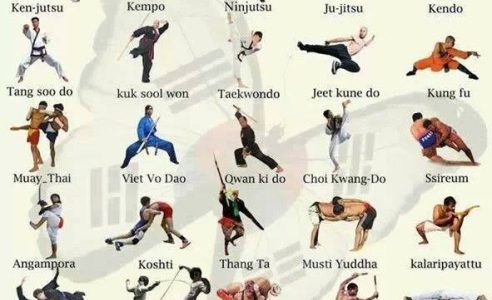Understanding The Fundamentals And Significance Of Taekwondo Patterns
Understanding The Fundamentals And Significance Of Taekwondo Patterns
Blog Article
Composed By-Nicolajsen Lindgreen
Did you know that there are over 20 various taekwondo types, each with its own unique sequence of movements and methods? These forms, additionally called poomsae, play a critical function in the practice and advancement of taekwondo experts.
However what exactly are these types, and why are they so substantial? In this conversation, we will certainly discover the fundamentals of taekwondo forms, their origins, and the key elements that make them an integral part of this martial art.
Whether aikido for older adults 're a novice or a skilled practitioner, comprehending the importance of taekwondo types will strengthen your gratitude for this old practice and improve your trip in the direction of proficiency.
Beginnings and Evolution
The beginnings and development of Taekwondo can be mapped back to ancient fighting styles methods in Korea. It was developed over 2,000 years ago and has given that turned into a popular and internationally identified sporting activity.
Taekwondo was greatly influenced by numerous Oriental fighting styles designs, such as Taekkyon and Subak, along with Chinese martial arts. It was initially utilized as a way of protection, but in time, it advanced right into an affordable sporting activity that concentrates on striking strategies and high kicks.
In the 20th century, Taekwondo underwent a considerable change and was standard into its modern-day form. The Korea Taekwondo Association played a vital role in this procedure, assisting to establish rules, methods, and forms that are still complied with today.
Key Elements and Techniques
Currently let's explore the basic aspects and strategies of Taekwondo. To fully comprehend the key elements and methods, it is essential to dig much deeper into the following subtopics:
- Stances: Taekwondo highlights the proper use of positions, such as the front position, back stance, and equine position. These stances give security, balance, and power in performing different strategies.
- Strikes and Kicks: Taekwondo is renowned for its powerful and dynamic kicks, consisting of the front kick, roundhouse kick, and side kick. Strikes, such as punches and knifehand strikes, are also crucial methods in Taekwondo.
- Blocks and Protection: Reliable protection is vital in Taekwondo. Blocks, such as the high block and low block, are utilized to secure against inbound assaults. Appropriate timing and positioning are essential to efficiently safeguarding oneself.
Benefits and Impact
One of the substantial benefits of practicing Taekwondo is the enhancement of physical conditioning and total well-being. By engaging in normal training sessions, you can improve your cardio wellness, stamina, adaptability, and endurance. Taekwondo involves a variety of motions that target various muscle mass teams, assisting you build a solid and toned physique.
Furthermore, this martial art promotes mental health by reducing tension and stress and anxiety levels. The technique and emphasis called for in practicing Taekwondo can assist enhance your focus and boost your capacity to handle difficult situations.
Additionally, the practice of Taekwondo infuses a feeling of self-confidence, self-discipline, and self-discipline, which can positively influence numerous locations of your life. In general, exercising Taekwondo can lead to a much healthier and extra balanced lifestyle.
Verdict
So there you have it! Taekwondo kinds aren't simply mere regimens, however a representation of the abundant background and evolution of this fighting style. By grasping the key elements and strategies, experts can enjoy countless physical and psychological benefits.
From enhanced see this and strength to improved emphasis and technique, taekwondo types have an enduring effect on those that exercise them.
So, whether you're a novice or an experienced martial artist, accept the power of these types and let them take you on a trip with time.
